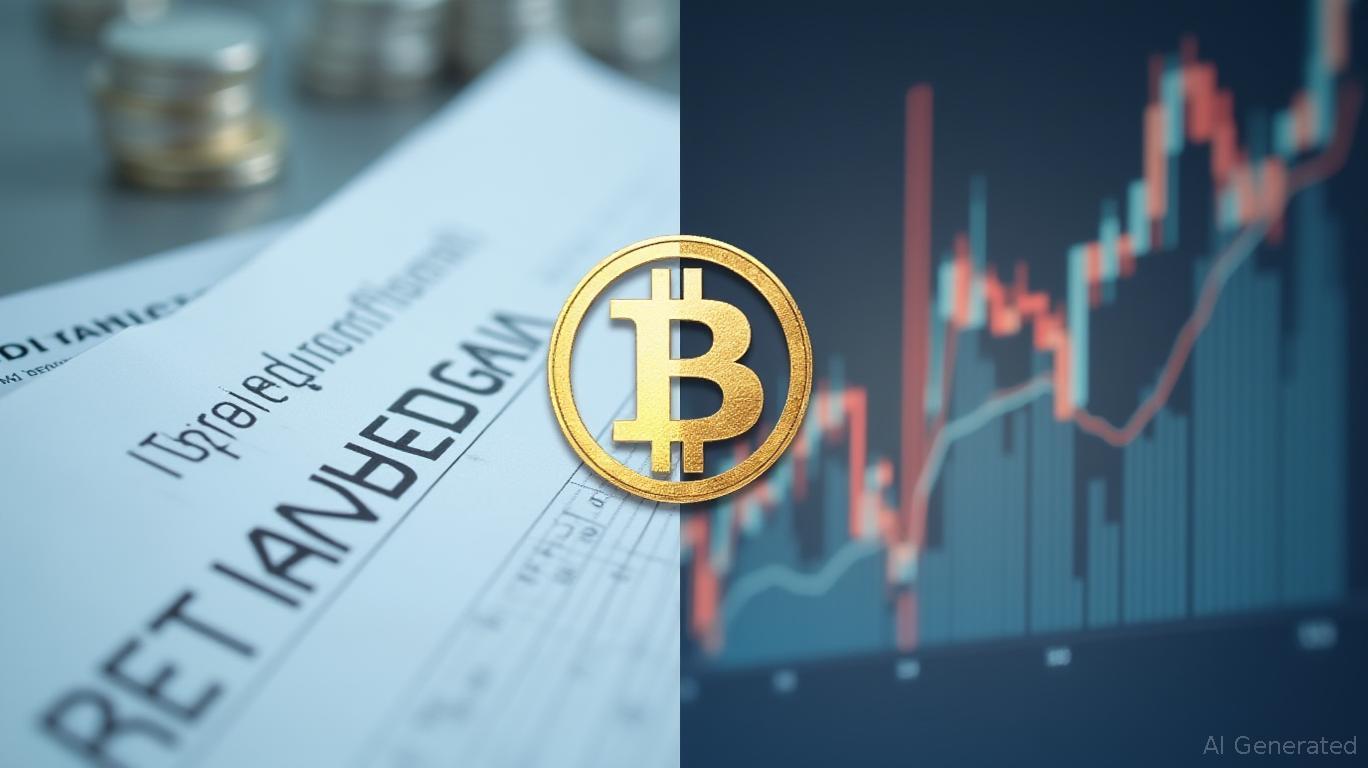The U.S. DOL's Reversal on Cryptocurrency in 401(k) Plans: A Regulatory Shift with Long-Term Implications
The U.S. Department of Labor's (DOL) May 28, 2025, decision to rescind its 2022 guidance restricting cryptocurrency in 401(k) plans marks a pivotal shift in retirement savings policy. By abandoning the “extreme care” standard, the DOL has returned to a neutral stance, allowing fiduciaries to evaluate crypto investments under the same ERISA principles governing traditional assets. This move opens the door to greater cryptocurrency exposure in retirement plans but raises critical questions about risk, opportunity, and investor preparedness.
A Regulatory Reset: From Overreach to Neutrality
The 2022 guidance had imposed an extra layer of scrutiny on fiduciaries considering crypto, requiring them to demonstrate “extreme care” before inclusion. The DOL now acknowledges this standard was neither grounded in ERISA nor aligned with its long-standing principles. Instead, fiduciaries must evaluate crypto investments using the same prudent standards as other assets: diversification, cost, risk-adjusted returns, and alignment with participant needs.
This reversal removes a regulatory barrier but does not guarantee crypto's sudden prominence in 401(k) plans. Currently, direct exposure to crypto (e.g., spot bitcoin or ether) remains rare in core plan menus. Most participation occurs through brokerage windows, where participants can invest in crypto via exchange-traded products (ETPs). For example, the ProShares Bitcoin Strategy ETF (BITO) has seen growing institutional and retail interest despite crypto's volatility.

Opportunities: Expanding Access and Innovation
The DOL's policy change creates two key opportunities for investors:
1. Increased Access to Crypto: Fiduciaries may now more freely consider adding crypto-based ETPs or blended funds to core 401(k) menus. This could democratize access for millions of Americans who lack the means or expertise to invest in crypto outside retirement accounts.
2. Institutional Validation: The removal of regulatory stigma could attract more institutional investors to crypto, potentially stabilizing prices and improving liquidity. For instance, shows its potential as a non-correlated asset class, though with extreme volatility.
Blended funds or target-date funds incorporating crypto could emerge as a compromise, offering diversified exposure without requiring participants to navigate individual holdings.
Risks: Volatility, Liquidity, and Regulatory Uncertainty
Despite the policy shift, crypto's inherent risks remain unresolved:
- Price Volatility: Crypto markets are prone to extreme swings, as seen in the 2022 crash that erased over $2 trillion in value. A underscores its instability compared to traditional assets.
- Liquidity Constraints: Even major cryptos like Bitcoin face liquidity risks during market stress. In 2023, Bitcoin's trading volume dropped 40% during a bear market, raising concerns about redemptions in illiquid environments.
- Regulatory Evolution: While the DOL has stepped back, other agencies like the SEC and CFTC continue to scrutinize crypto. For example, the SEC's 2024 ruling against Ripple Labs highlighted ongoing legal ambiguities, which could affect 401(k) plan options.
Fiduciary Prudence: A Balancing Act
Fiduciaries now face a dual challenge: leveraging crypto's potential while mitigating risks. Key considerations include:
- Participant Education: Many 401(k) participants lack crypto literacy. Plans offering crypto exposure must provide clear disclosures about risks and fees.
- Cost Analysis: Crypto ETPs often carry higher expense ratios than traditional ETFs. For instance, BITO's 0.40% expense ratio is twice that of the S&P 500 ETF (SPY).
- Diversification: Crypto's low correlation with traditional assets could improve risk-adjusted returns, but only if held in small allocations (e.g., 1–5% of a portfolio).
Investment Strategy: Proceed with Caution
Investors should approach crypto in 401(k) plans with a disciplined, long-term lens:
1. Start Small: Allocate no more than 1–2% of retirement savings to crypto, ideally through low-cost ETPs.
2. Focus on Liquidity: Prioritize ETPs with high trading volumes and clear redemption mechanisms, avoiding niche or unregulated products.
3. Monitor Regulatory Developments: Track SEC actions (e.g., Bitcoin ETF approvals) and global policy shifts, as these could impact crypto's institutional adoption.
Conclusion: A New Era of Choice
The DOL's reversal signals a shift toward investor autonomy in retirement planning. While crypto's inclusion in 401(k)s could grow, it will depend on fiduciaries' ability to balance innovation with prudence. For investors, the door is now ajar—but the path ahead requires careful navigation.
The long-term implications hinge on whether crypto can prove itself as a stable, liquid, and educationally accessible asset class. Until then, proceed with caution, diversify thoughtfully, and stay informed. The retirement savings landscape is evolving, but fundamentals—prudence, cost, and risk—remain timeless.

Comments
No comments yet